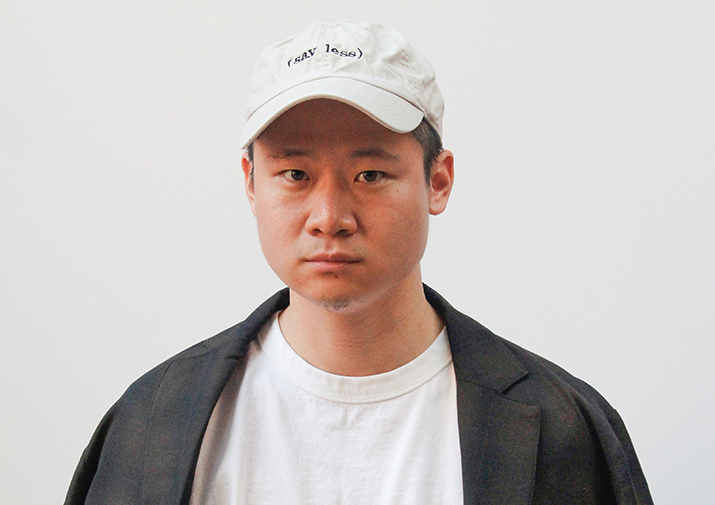
Global Footwear Awards Category winner Chia Yuan Ko discussed FTW_SYMT , GFA 2020 winning design.
Making its debut on the international design stage, Global Footwear Awards (GFA) has begun its global search to identify the most innovative design in footwear. FTW_SYMT was awarded the best in sustainable category for student level.
“SYMT” stands for the geometry term “symmetry.” It is the project backbone, a sustainability thinking embodied as a pair of footwear, “FTW_SYMT“. Rethinking the starting point of the typical shoe making process paves way for the design direction of FTW_SYMT. By adopting a symmetrical die cut pattern upon each component on both feet, the total amount of steel-made molds drop to half; fusing paper pleating technique into the mono-material fabric increases the structural strength. The experimental approach proposes feasible options in balancing energy cost, craftsmanship and functionality.
Chia-Yuan’s background:
Chia-Yuan (Caleb) Ko / 高嘉元, essentialist, industrial designer and sneaker geek. He explores the intersection encompassing 3D interactive fabrication, origami texture and procedural art visualization, bridging physical and digital experience. His works are featured in international design communities such as Core77 Design Awards, IDA Design Awards, Global Footwear Award and Taiwan Design EXPO. He holds a BS in Industrial Design and currently a MID student at Pratt Institute.
GFA talks with Chia Yuan about his winning project.
What do you see as the strengths of your winning project?
The winning project, FTW_SYMT, is developed as an approach-driven design statement that provides feasible guidelines towards the future sustainability making. The project reimagines how to utilize the low-tech origami application upon footwear upper and translate the pleating structure into functional pieces. It is the sense of boldness exploring unconventional design approaches that becomes the major strength of the project.
What was most important for you when working on this project and what were the biggest challenges you faced?
The massive origami pattern-making iteration has yielded the critical insights on the shoe upper construction. The biggest challenge along the way is to balance the fabric ply and the sewing precision. Sewing 12 ply of the linens at the same time marks the largest thickness within the fabrication process.
What is your guiding design principle?
As I believe design should be as honest as possible, my guiding principle is to reveal the thought process behind it and take it as the exposing design languages; it is also a way to document the new knowledge discovered from the design or research process.
How do you think your own culture and environment has shaped your personal and professional creative vision?
I am not born with the rebellious nature but it is my body’s reaction towards the oppressive, academic-driven education system growing up in Taiwan. This type of developed nature has formed a desire to unveil the systematic framework behind the surfacing problem, having that strong inner voice to say NO to the known facts and to embark on feasible alternatives. My creative vision is initiated by knowing that everything is worth questioning when I was 18, and still working on the meta skill of being able to think about one’s thinking.
What would be your dream design project?
I’m working on an algorithm-driven customization framework, particularly for footwear, which is intersected by digital fabrication, crypto art and form-finding augmentation. This will be my dream project so far.
What’s your creative process and what creative software do you use?
My typical workflow mostly starts by messing around with papers, it plays a big part for myself searching certain logic in the ambiguity phase before diving into the sketches. Some go-to softwares in my footwear design pipeline include Rhino Grasshopper, Maya, p5.js and arduino.
How has the pandemic affected your work and design process?
Pandemic sucks for real, I couldn’t access my own 3D printer at school for almost a year. However, it gives me a chance to explore digital mediums such as multiple Grasshopper Plugins or interactive fabrication research with different sensors; later on all the tools become quite handy in my thesis year in 2020-2021.
How do you feel about the topic of sustainability in regards to footwear design in general?
Sustainability should become one of the founding criteria in formulating a footwear design no matter if it is about recyclability, energy cost or LCA. However, I don’t think sustainability should become a major sales pitch to the customer nor should it become a political issue judging any particular design.
What would you tell your younger self seeing you winning the awards? “Be weird and question everything.”
How do you feel about the impact of new technology towards footwear design and the industry as a whole?
I am thrilled to see how innovative fabrication tools, pushing the boundaries of sustainability, are centered in the dialogue of the footwear industry. The new technologies lowers the entry barrier to materialize the concept and elevates the overall taste and standard of the design outputs. Can’t wait to witness the day when footwear communities evolve into a closed-loop industry.